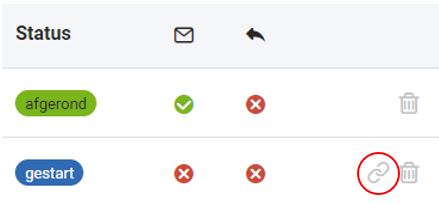Questions & Answers
Questionnaire/SAQ
SAQ Compact : les scores, l’analyse d’écart et le plan d’action
As a company administrator, I also want to complete the questionnaire. How do I do that?
When do I choose the SAQ Compact or the SAQ Extended?
Some employees in my company have difficulty filling out the questionnaire. How can I provide the questions with an explanation?
Respondents are notified that the deadline has passed. How do I open the questionnaire again?
How do I create and send a new questionnaire?
Do the different job levels (executive/management) also get different questions?
What is the difference between the SAQ Compact and SAQ Extended?
Can I group or filter the results?
How can my colleague also send questionnaires or view the results?
Where can I download/export the results?
Where can I find the completed explanations of the respondents?
Add tags (afterwards)
What questions does SAQ Compact consist of?
Can I restore a deleted questionnaire?
Can't import respondents - how do I fix this?
Options de réponse à une question (SAQ Compact)
Where can I view the scoring per answer?
Do the added respondents automatically receive an invitation to complete the questionnaire?
Do part-timers also have to complete the questionnaire?
How is the score for SAQ Compact calculated?
How many questions does SAQ Compact have?
What does H&S mean in SAQ?
How do I determine for which step I am going to fill in the questionnaire?
What questions does the SAQ Extended consist of?
Qu'est-ce qu'une marche "step" ?
How many questions are there in the questionnaire?
How is the score calculated for SAQ Extended?



 next to the title of the questionnaire. Enter a date in the future in the Last response date. When you save this, the questionnaire will be opened up to respondents again.
next to the title of the questionnaire. Enter a date in the future in the Last response date. When you save this, the questionnaire will be opened up to respondents again.